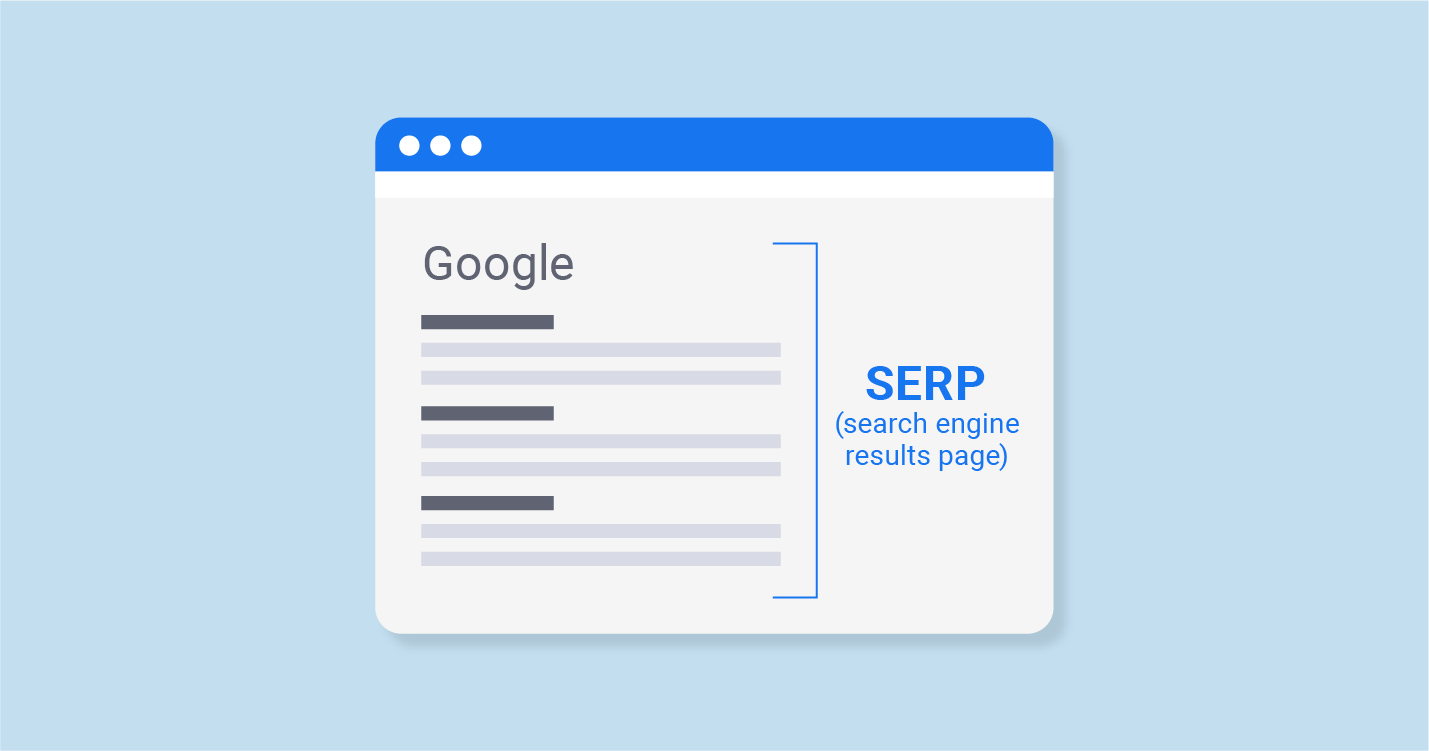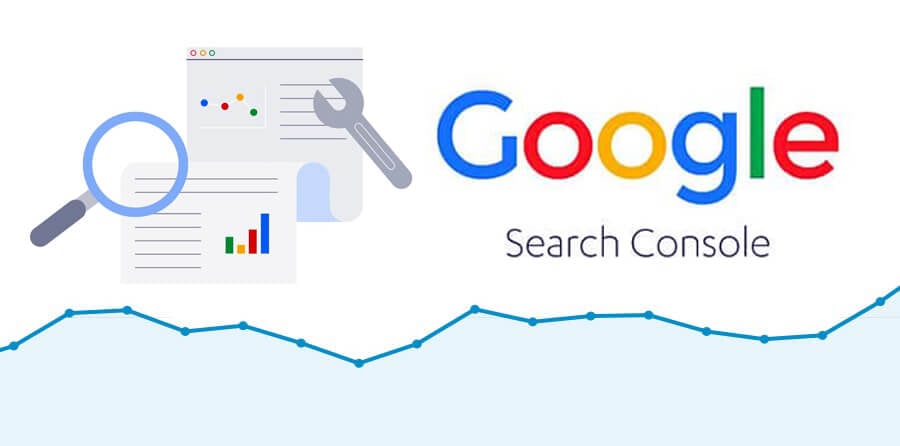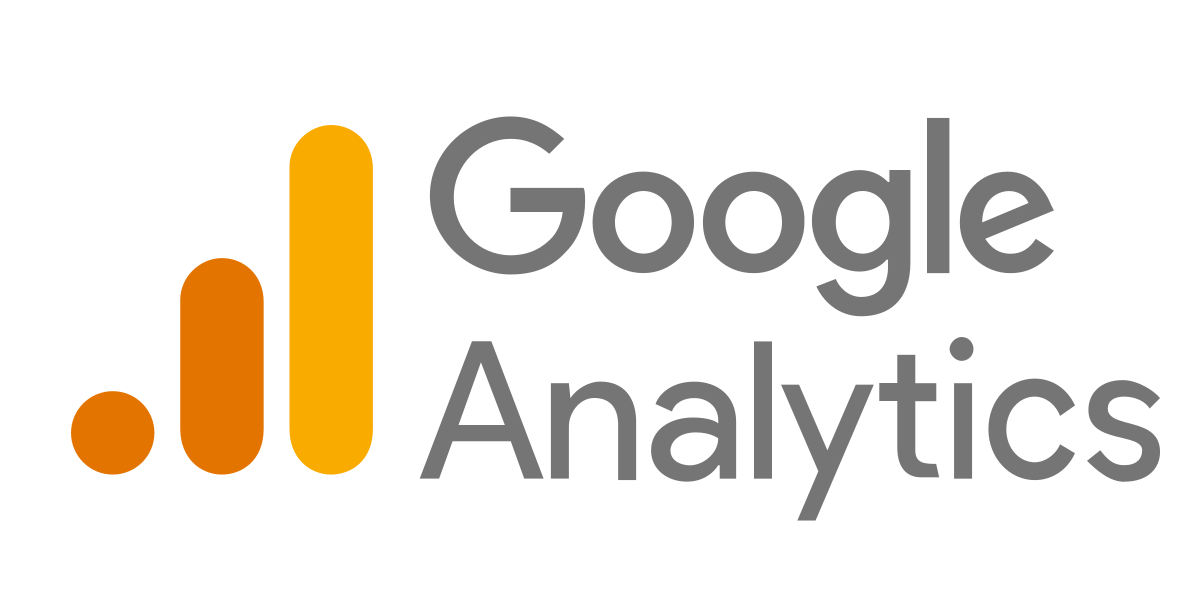SEO for Beginners: Your Essential Guide to Getting Started
Learn how to do SEO the right way with this beginner’s guide. Discover essential SEO strategies to boost your website’s visibility and rankings.

Table of Contents
- What is SEO, and why is it important?
- SEO Glossary: Key Terms You Need to Know
- Understanding Search Engines: The Backbone of SEO
-
How SEO Works
- Key Elements of SEO
- Setting Up Google Analytics & Search Console
- Local SEO & Google Business Profile
- Conducting Keyword Research
- Understanding Search Intent
- Analyzing SERP Competitors
- Enhancing User Experience
- Selecting the Best Website Structure
- Creating a Solid URL Structure
- Creating & Optimizing Content for SEO
- Researching Your Audience’s Needs
- Researching Top-Ranking Content
- Creating Engaging SEO Content for Users
- Making Your Content SEO-Friendly
- Adding Schema Markup for SEO
- Optimizing Internal Links
- Understanding Backlinks & Their Role in SEO
- Measuring SEO Performance
- Monitoring SEO Rankings for Continuous Improvement
- Understanding Organic Traffic & Its Importance
- Understanding Pages Per Session
- Measuring Organic Leads & Sales Through SEO
- Conclusion
-
What is SEO, and why is it important?
Search Engine Optimization (SEO) focuses on increasing organic traffic—visitors who arrive at your site through search engine results instead of paid ads. By refining your website’s structure and content, you improve its visibility in search rankings.
Google dominates the global search engine market, holding about 81% of the total share. However, it’s beneficial to optimize for other platforms like Bing, Yahoo, and Baidu, as they also attract significant search volumes.
Every day, billions of users turn to Google to find products, services, and information. With around 8.5 billion searches processed daily, search engines have become one of the most powerful tools for driving traffic to websites. The higher your site ranks in search results, the more visitors you’re likely to attract.
Why SEO is worth the effort
Still wondering if SEO is a worthwhile investment? Consider these key insights:
- Organic traffic plays a crucial role in driving potential customers to websites.
- Most users rarely go beyond the first page—only 0.63% click on results from the second page.
- Ranking first matters—the top result in search engine results pages (SERPs) has a 39.8% click-through rate (CTR).
- SEO enhances user experience, aligning with Google's latest updates to prioritize helpful and relevant content.
- A well-optimized site yields a better return on investment (ROI) compared to other marketing strategies.
If you're ready to improve your site’s SEO and boost organic traffic, let’s dive deeper into strategies like keyword targeting and effective optimization techniques! -
SEO Glossary: Key Terms You Need to Know
Before diving into SEO strategies, let's get familiar with essential industry terms. Understanding these will help you optimize your site effectively for search engines like Google, Bing, and Yahoo.
✅ Keywords: Words or phrases users enter into search engines when looking for specific content.
✅ Long-tail keywords: Longer, more specific keyword phrases that typically have lower search volume but can attract highly targeted traffic.
✅ Keyword difficulty: A metric that assesses how hard it is to rank for a particular keyword based on competition and search volume.
✅ Keyword relevance: The significance of a keyword in relation to a webpage’s content. Search engines use this factor to determine rankings.
✅ Search volume: The number of times a specific keyword or phrase is searched within a given time frame.
✅ Backlinks: External links from another site pointing to your webpage—these help boost credibility and rankings when they come from high-quality sources.
✅ Search query: The combination of keywords or phrases users type into search engines to find relevant information.
✅ SERPs (Search Engine Results Pages): The pages displayed by search engines in response to a user’s query, showing ranked results.
✅ Indexing: The process search engines use to analyze and store web pages so they can be retrieved quickly when users search.
✅ Ranking factor: The criteria search engines apply to evaluate and rank web pages based on relevance, quality, and user experience.
✅ On-page SEO: Optimization techniques applied directly on a webpage, including keyword placement, meta tags, high-quality content, and image optimization.
✅ Off-page SEO: Activities outside your website that influence rankings, such as backlinks, social media engagement, and domain authority.
✅ Local SEO: The practice of optimizing your website for searches specific to a geographic location, improving visibility for nearby customers.
✅ Googlebot: Google’s web-crawling bot that indexes web pages, ensuring they appear in search results for relevant queries.
✅ Search algorithm: A system of formulas used by search engines to assess the quality and relevance of web pages for ranking purposes.
✅ Sitemap: A structured list of web pages within a domain, helping search engines navigate and index the site effectively.
✅ White hat SEO: Ethical SEO strategies that align with search engine guidelines, such as quality content creation and proper keyword usage.
✅ Black hat SEO: Unethical SEO tactics that violate search engine rules, including keyword stuffing, cloaking, and link manipulation—these can lead to penalties.
-
Understanding Search Engines: The Backbone of SEO
SEO wouldn’t exist without search engines, so it’s essential to understand how they function and deliver personalized results to users.
Search engines are powerful digital tools that help users find information online. These systems scan the vast web, retrieving and organizing data that matches search queries. Among them, Google dominates the market as the most widely used search engine.
Key Components of Search Engines
Search engines rely on two primary elements to operate efficiently:
- Search Index: A massive database storing web pages to be retrieved when users perform searches.
- Search Algorithms: Complex formulas that analyze and rank content based on relevance, authority, and usability.
Google offers two types of search results—organic and paid. While organic results are earned through SEO strategies, paid results involve advertisers bidding for placement. Each time someone clicks on a paid result, the advertiser is charged—a model known as Pay-Per-Click (PPC).
How Google Builds Its Search Index
Every search engine has its own process for creating a search index. Here’s how Google identifies and organizes web pages:
1. Finding URLs
Google begins by collecting web addresses (URLs) using methods like:
- Sitemaps: Website owners submit structured lists of pages for indexing.
- Backlinks: Links from established web pages help Google discover new content.
- Manual Submission: Site owners can request indexing via Google Search Console.
2. Crawling
Search engines send bots (crawlers/spiders) to explore and collect data from web pages, including text, images, videos, and downloadable content.
3. Processing & Rendering
Once crawled, Google analyzes the page’s content and structure, evaluating elements like CSS, JavaScript, and images to understand how users interact with the site.
4. Indexing
After processing, Google stores the page in its search index, making it accessible when users enter relevant search queries.
Google’s Ranking Factors
Google uses over 200 ranking factors to determine which web pages appear in search results. Here are a few key ones:
✅ Relevance: Content must closely match user intent and search queries.
✅ Backlinks: High-quality, relevant links improve a site’s authority and ranking.
✅ Mobile-Friendliness: With over 15 billion mobile users in 2021, expected to reach 18 billion by 2025, Google prioritizes mobile-optimized websites.A mobile-friendly site ensures smooth access across devices, enhancing user experience and search rankings.
-
How SEO Works
To understand Search Engine Optimization (SEO), it helps to look at how users interact with search engines like Google. When someone types a query into the search bar, Google scans its vast database and presents results that best match the request.
Google's Goal: Relevant & Useful Results
Google prioritizes relevance and quality, ensuring users receive the most helpful information. To do this, it must recognize web pages, analyze their content, and assess their credibility. Using advanced ranking algorithms, Google determines which pages deserve a spot in search results based on various factors.
The Role of Keywords in SEO
When searching, users enter keywords—specific words or phrases related to their topic. These can be typed manually or spoken via voice search, and they play a major role in SEO strategy.
Google’s Search Quality Ratings
Google evaluates content using search quality rating guidelines, which help determine when a page appears on Search Engine Results Pages (SERPs). Factors that influence rankings include:
✅ Content quality & quantity: Well-researched, in-depth content tends to rank higher.
✅ Website reputation & trustworthiness: A strong online presence boosts visibility.
✅ EAT (Expertise, Authoritativeness, Trustworthiness): Google prioritizes content from credible sources.These ranking signals ensure that users get reliable, informative, and trustworthy content at the top of search results.
Pro Tip for SEO Tracking
To check your website’s ranking, search for the keywords you're targeting. If your site has multiple pages, use tools like SEMrush to discover additional terms you might already be ranking for.
-
Key Elements of SEO
Mastering Search Engine Optimization (SEO) involves multiple strategies, but breaking it down into these five core components makes it more manageable:
✅ Keyword & Competitor Research: Identify and analyze search terms people use to find businesses like yours. Understanding competitor strategies can also help refine your approach.
✅ Content Creation: Develop high-quality, engaging content tailored to user intent and search relevance.
✅ On-Page SEO: Optimize website elements like titles, meta descriptions, images, and internal links to boost rankings and enhance organic traffic.
✅ Link Building: Strengthen credibility by acquiring high-quality backlinks from authoritative sites—this is a key off-page SEO strategy.
✅ Technical SEO: Ensure search engines can find, crawl, and index your site efficiently by improving elements like site speed, mobile-friendliness, and structured data.
By focusing on these foundational SEO principles, you can increase visibility, attract more traffic, and improve rankings over time! ????
-
Setting Up Google Analytics & Search Console
Tracking SEO performance is essential, and Google Analytics is one of the best tools for the job. By integrating it into your website, you can gain valuable insights, including:
✅ Page visits – Understand how many users land on specific pages.
✅ Session duration – Analyze how long visitors stay on your site.
✅ Conversions – Track how many users complete desired actions, such as purchases or sign-ups.Meanwhile, Google Search Console helps monitor how your site appears in Google search results. With it, you can:
✅ Identify keywords driving traffic to your pages.
✅ Detect and resolve crawl errors affecting rankings.
✅ Submit sitemaps for indexing to ensure all pages are discoverable.Setting up both tools is simple, but must be done correctly to ensure accurate tracking. If you need step-by-step guidance, check out these resources:
-
Local SEO & Google Business Profile
If your business operates within a specific region, local SEO is essential for attracting nearby customers searching for products or services like yours. The goal is to boost your online presence so potential customers in your area can easily find your business.
To begin optimizing for local search, the first step is setting up a Google Business Profile (formerly known as Google My Business). This free tool helps businesses manage their online information, appear in Google Search & Maps, and engage with local audiences effectively
-
Conducting Keyword Research
Keywords are at the heart of SEO—they help search engines connect users with the most relevant content. When people search online, they enter phrases that search engines use to find matching results. That’s why keyword research is essential for improving search rankings and driving traffic.
What Is Keyword Research?
Keyword research involves identifying and analyzing phrases people use when searching for information online. Incorporating relevant keywords naturally throughout your content signals to search engines that your website provides value, increasing visibility in search results.
A strategic approach to keyword research also includes long-tail keywords—detailed phrases often used in voice searches or by users closer to making a purchase. These keywords offer higher specificity and can attract more qualified traffic.
By targeting the right keywords, your content is more likely to appear when users search for solutions or information, ultimately leading to increased organic traffic.
Four Steps to Effective Keyword Research
1️⃣ Brainstorm Relevant Keywords
Start by asking:
- What are the core themes of your website?
- What do you aim to achieve with your content?
- What search terms would you use to find your website?
- What keywords does your target audience likely use?
You can also gather insights by asking others what phrases they would use to search for your site. Compile a list of potential keywords and refine them in the following steps.
2️⃣ Analyze Competitor Keywords
Understanding what competitors rank for can help refine your keyword strategy. Search for one of your brainstormed keywords and note which websites appear on top of SERPs.
Using SEO tools like Ahrefs Site Explorer, analyze competitor pages with the most traffic and identify their targeted keywords. From there, focus on creating high-quality content around similar keywords to improve your chances of ranking above them.
3️⃣ Examine Customer Communications
Look through customer interactions, including emails, support tickets, and FAQs, for common questions and terms.
Social media platforms like Facebook, Instagram, and Twitter also offer valuable audience insights. Pay attention to how customers discuss your products/services and identify keyword opportunities.
4️⃣ Research Related Terms
Expand your keyword list by looking up related search terms. When entering a keyword in Google, scroll down the results page to find suggested searches—these can help refine your targeting strategy.
By integrating relevant, long-tail, and competitor-focused keywords into your content, you’ll boost your site’s visibility and attract high-quality organic traffic over time.
-
Understanding Search Intent
When conducting keyword research, it's essential to consider search intent—the reason behind a user's search query. Optimizing for the right intent improves your chances of ranking higher on Google and attracting the most relevant audience to your site.
Types of Search Intent
- Navigational Intent: The user already knows what they want to find—often a specific website, page, product, or brand (e.g., “LinkedIn login” or “Nike official store”).
- Informational Intent: The user seeks knowledge or answers to a question. These searches typically include "how," "why," "what," "where," or "guide" (e.g., “How does SEO work?” or “Best practices for content marketing”).
- Transactional Intent: The user is ready to make a purchase or take action, often looking for product pages, pricing details, or reviews (e.g., “Buy wireless headphones” or “Best laptops under $1000”).
Identifying Search Intent for Keywords
A simple way to determine a keyword's intent is to enter it into Google and observe the types of results displayed. For example:
- If you see brand websites, the keyword likely has navigational intent.
- If guides, blogs, and Q&A pages dominate the results, it's informational intent.
- If product listings, ads, and eCommerce pages show up, it's transactional intent.
By aligning your SEO strategy with user intent, you can create content that attracts the right audience and improves conversion rates.
-
Analyzing SERP Competitors
Understanding your SERP (Search Engine Results Page) competitors is crucial for refining your SEO strategy. By analyzing top-ranking websites for your target keywords, you gain insights into what works and where you can improve.
How to Identify Competitors
Start by searching for your primary keyword and noting the websites that consistently rank at the top. These are your direct SEO competitors, even if they don’t offer the same products or services.
Key Factors to Analyze
✅ Website Design & Structure – Observe common elements like layout, navigation, and user experience that might contribute to better rankings.
✅ Keyword Optimization – Study where and how competitors use keywords within headings, meta descriptions, URLs, and content.
✅ Content Strategy – Evaluate the types of content they produce—blog posts, videos, infographics, or guides—to understand what resonates with search engines and users.
Why SERP Analysis Matters
By examining competitors, you uncover SEO gaps and opportunities that can help you enhance your strategy. Whether it’s better content, stronger backlinks, or technical improvements, studying SERPs helps position your website more competitively.
-
Enhancing User Experience
User experience (UX) is now a ranking factor, meaning Google prioritizes websites that provide seamless, engaging, and accessible interactions. To improve UX and boost search rankings, follow these essential guidelines:
✅ Ensure Mobile-Friendliness
Most users browse via mobile devices, so your site should be fully responsive. Use Google’s Mobile-Friendly Test to check compatibility and make adjustments if needed.✅ Optimize Page Speed
Slow-loading pages hurt user experience and SEO rankings. Improve speed by compressing images, reducing code bloat, and leveraging caching.✅ Limit Intrusive Pop-Ups
While ads are necessary, avoid aggressive pop-ups that disrupt navigation. Google penalizes sites with intrusive ads that negatively impact UX.✅ Secure Your Site (HTTPS)
Install an SSL certificate to encrypt user data and protect against cyber threats. Secure websites rank higher and build trust with visitors.✅ Improve Content Readability
Ensure content is easy to read across devices—use clear fonts, structured formatting, and an intuitive design that aligns with your brand.Focusing on user-first design enhances SEO performance, engagement, and conversions.
-
Selecting the Best Website Structure
Your website’s structure determines how pages are organized, linked, and navigated, affecting both user experience and search engine rankings. A well-structured website ensures content is easily accessible, helping search engines index it effectively.
Three Common Website Structures
✅ Linear (Sequential) Structure:
Best for small sites that present information in a step-by-step format—ideal for product or brand storytelling with a logical flow.✅ Network (Web-Linked) Structure:
Allows users to navigate freely from one page to another. Works well for interconnected websites with multiple related pages.✅ Hierarchical Structure:
The most popular SEO-friendly structure, organizing content into categories and subcategories—perfect for blogs, eCommerce sites, and knowledge hubs.Why Site Structure Matters for SEO
- Boosts Search Rankings – Search engines assess well-structured sites more efficiently.
- Enhances Crawling & Indexing – A solid structure ensures pages are discovered and indexed correctly.
- Improves Relevance – Helps Google understand what a page is about, improving ranking accuracy for relevant search queries.
- Simplifies New Page Discovery – Makes it easier for search engines to locate newly added content.
- Strengthens User Experience – Since UX is a ranking factor, a clear, easy-to-navigate site enhances both engagement and conversions.
-
Creating a Solid URL Structure
A URL (Uniform Resource Locator) is the web address that directs users to specific pages on a website. It consists of three key parts:
- Protocol: Defines the method of access (HTTPS ensures secure connections).
- Domain Name: The main website address.
- Path: Specifies a particular page or section within the site.
For example: https://www.sparkcliks.com/blog/seo/basic-seo
- Protocol:
https:// - Domain:
sparkcliks.com - Path: /blog/seo/basic-seo
Why URL Structure Matters in SEO
✅ Enhances User Experience – Clear, well-structured URLs help users and search engines understand the page’s content.
✅ Improves Rankings – Optimized URLs aid in crawling and indexing, making it easier for search engines to rank content.
✅ Boosts PageRank – A strong URL structure supports Google’s ranking algorithms, helping increase search visibility.Avoid keyword stuffing, as it’s considered a black-hat SEO tactic that can harm your rankings.
Best Practices for SEO-Friendly URLs
- Use HTTPS for secure connections.
- Keep URLs short, relevant, and readable.
- Avoid unnecessary stop words like the, and, of, or, etc.
- Use lowercase letters to prevent duplicate content issues.
-
Creating & Optimizing Content for SEO
High-quality SEO content delivers valuable, relevant, and engaging information that meets user needs. People rely on search engines to find solutions, so crafting search-friendly content helps improve rankings and visibility.
Steps to Create SEO-Optimized Content
✅ Identify User Intent: Research common questions and topics users search for within your industry.
✅ Find Unique Angles: Offer fresh perspectives or insights not already covered by competitors.
✅ Optimize Structure: Use clear headings, subheadings, and bullet points to improve readability and accessibility for both users and search engines.
✅ Keyword Integration: Place relevant keywords naturally throughout content—avoid overstuffing.
✅ Enhance Engagement: Include images, infographics, and videos to make content more interactive and valuable.
✅ Optimize Metadata: Write compelling title tags, meta descriptions, and alt text for images to improve SEO performance.
-
Researching Your Audience’s Needs
Understanding what your audience wants is essential for effective SEO—and if you've already conducted keyword research, you're off to a strong start. Here’s how to refine your insights and create content that resonates with users:
✅ Define Specific Needs: Narrow your focus by identifying exact pain points, interests, or challenges your target audience faces. This helps reduce competition for the same search terms and positions your content as uniquely valuable.
✅ Focus on a Niche: Specializing in a specific topic or industry allows you to craft detailed, authoritative content with a higher chance of ranking—especially for long-tail keywords.
✅ Approach Content from Different Angles: Provide thorough coverage by exploring various perspectives, use cases, and solutions related to a topic.
✅ Analyze User Behavior & Feedback: Leverage comments, forums, social media discussions, and customer inquiries to uncover real-world concerns your audience has.
-
Researching Top-Ranking Content
To create content that outperforms competitors, you need to understand what’s already ranking on Search Engine Results Pages (SERPs). While keyword research helps define search intent, analyzing top-ranking pages provides additional insights into content strategies that work.
How to Analyze Ranking Content
✅ Study Search Intent: Look at how existing top-ranking pages align with user intent—whether they provide informational, navigational, or transactional content.
✅ Review Content Types: Identify what formats rank well in your niche—blogs, videos, infographics, guides, or listicles—and structure your content accordingly.
✅ Evaluate Content Quality: Observe how top-performing pages present their information—do they use detailed insights, engaging visuals, or expert citations?
✅ Find a Unique Angle: Instead of replicating ranking content, enhance it with better research, fresh perspectives, and improved readability.
Why This Matters
Studying SERP competitors helps refine your content strategy, ensuring your page delivers more value than existing search results, ultimately increasing rankings, engagement, and traffic.
-
Creating Engaging SEO Content for Users
The core of SEO success lies in developing valuable, user-focused content. Here’s a structured approach to ensure your content resonates with both search engines and readers.
Step 1: Outline Your Content
Start with a clear structure, defining headings, subheadings, and formatting based on content type—whether it’s a blog post, product page, or guide.
Step 2: Craft a Unique First Draft
Write compelling, original content that fully covers the topic while showcasing your expertise. Identify subtopics that top-ranking pages haven’t explored to make your content stand out.
Step 3: Make It Valuable for Users
Consider these approaches to enhance uniqueness and engagement:
✅ Expand on popular topics with real-world examples or case studies.
✅ Include customer insights or quotes for a fresh perspective.
✅ Conduct original research and present findings via blogs, videos, or infographics.
✅ Maintain an up-to-date FAQ section addressing common customer queries.
✅ Feature a photo gallery showcasing products/services with SEO-optimized captions.Step 4: Edit & Optimize
Thoroughly proofread for accuracy, clarity, and readability. Ensure logical flow and check for grammar mistakes—feedback from a peer can refine your content further.
Bonus: Align with SEO Best Practices
???? Integrate relevant keywords naturally—avoid keyword stuffing.
???? Optimize meta descriptions to improve click-through rates.
???? Use structured headings (H1, H2, H3) for easy navigation -
Making Your Content SEO-Friendly
Optimizing your content improves search visibility while enhancing user experience. Here’s how to ensure your content ranks well while remaining engaging and accessible.
1️⃣ Write Effective SEO Titles, Meta Descriptions & Subheadings
✅ SEO Title: Also known as the HTML title tag, this appears as the headline in search results. Place your main keyword at the beginning or near the start for better ranking impact.
✅ Meta Description: This brief summary appears under the title in search results, influencing click-through rates. Include relevant keywords naturally to improve visibility.
✅ Subheadings (H1, H2, H3): Structuring content with headings makes it easy to read and scan.
- H1: Primary heading that includes the main keyword and defines the content’s focus.
- H2: Breaks up content into sections, helping users navigate efficiently.
- H3: Adds further organization to subsections for better readability.
2️⃣ Optimize Images & Media
- Relevant Images: Use visuals that complement your content topic—search engines assess image relevance just like text.
- File Format: JPEG and PNG are ideal choices, as they compress well and maintain quality.
- Compression: Reduce image size using compression tools to improve page load speed.
- Alt Tags: Describe images with keyword-rich alt text to boost search visibility and enhance accessibility.
- Video Transcripts: Adding transcripts makes content more search-friendly while improving accessibility.
3️⃣ Keep Content Fresh & Updated
- Search engines prioritize fresh, relevant information. Review content monthly to update outdated details and refine SEO elements.
- Schedule time to improve older posts, fix broken links, and add new insights based on emerging trends.
-
Adding Schema Markup for SEO
Schema markup is a structured data code that helps search engines better understand your website’s content, leading to enhanced search results and improved visibility.
Common Types of Schema Markup
- Article – Used for blogs, news articles, and written content.
- BreadcrumbList – Enables breadcrumb navigation for easier site exploration.
- Event – Provides details about concerts, webinars, or festivals.
- FAQPage – Displays frequently asked questions with structured answers.
- HowTo – Optimizes step-by-step instructional content.
- LocalBusiness – Defines business information, including location and services.
- Organization – Specifies details about companies or institutions.
- Product – Highlights product details, ratings, and reviews.
- Recipe – Formats cooking recipes with structured instructions.
- Review – Enhances visibility for product/service reviews.
- Software Application – Categorizes software and app-related details.
- VideoObject – Improves indexing and visibility for video content.
- JobPosting – Displays structured job listing details.
- Course – Optimizes educational content like online courses.
- Book / Movie / TV Series / Music Recording – Structured data for media content.
- Offer – Showcases promotional offers for products or services.
How to Add Schema Markup
You can implement schema markup manually in HTML or use tools like:- Google’s Structured Data Markup Helper
- Schema.org generators
Product
Recipe
As you can see, using schema markup can help search engines better understand your content and improve how that content is displayed in search results. For a deeper dive on schema markup, check out Google's help documentation to read more.
- Article – Used for blogs, news articles, and written content.
-
Optimizing Internal Links
Internal linking plays a key role in website structure and helps search engines better understand page relationships and hierarchy. When used strategically, it enhances rankings, visibility, and user experience.
Why Internal Links Matter
✅ Boost SEO & Indexing – Search engines use links to discover and rank pages efficiently.
✅ Improve User Navigation – Links guide visitors to related topics, keeping them engaged longer.
✅ Enhance Keyword Context – Anchor text should be descriptive and keyword-rich, signaling relevance to search engines.Best Practices for Internal Linking
- Use Relevant Anchor Text – Make anchor text meaningful so users and search engines understand its purpose.
- Link to High-Value Pages – Prioritize linking to pillar content or important resources.
- Keep It Natural – Avoid excessive linking that disrupts readability or appears forced.
- Structure for Accessibility – Ensure links help users and search bots easily navigate your site.
Avoid Overlinking
Too many internal links dilute SEO value and may negatively impact user experience. Focus on quality over quantity when crafting links within your content. - Use Relevant Anchor Text – Make anchor text meaningful so users and search engines understand its purpose.
-
Understanding Backlinks & Their Role in SEO
Backlinks are critical SEO signals that help determine a website’s authority and ranking. When other sites link to your content, it acts as an endorsement, showing search engines that your page is trustworthy and valuable.
Why Backlinks Matter
✅ Boost Search Rankings – Sites with high-quality backlinks tend to rank higher in search results.
✅ Enhance Credibility – Links from trusted sources signal to Google that your content is authoritative.
✅ Increase Referral Traffic – Visitors from linked pages can discover your content, leading to more engagement.How to Attract Quality Backlinks
- Create Shareable Content – Publish valuable, well-researched content that people want to link to.
- Engage with Industry Experts – Connect with bloggers, journalists, and influencers to encourage backlinks.
- Pitch Story Ideas – Offer unique insights or case studies that news sites and industry blogs might reference.
- Leverage Guest Posting – Write articles for reputable sites in your niche, earning backlinks while expanding visibility.
- Create Shareable Content – Publish valuable, well-researched content that people want to link to.
-
Measuring SEO Performance
A strong SEO strategy requires continuous monitoring and adjustments based on performance insights. Tracking key metrics helps identify what’s working and where improvements are needed.
Essential SEO Metrics to Track
✅ Keyword Rankings – Measures the position of your website in Search Engine Results Pages (SERPs) for specific search terms.
✅ Organic Traffic – Tracks visitors who arrive through unpaid search results, rather than ads or referrals.
✅ Core Web Vitals – Google's user experience factors, including page speed, interactivity, and stability.
✅ Referring Domains – External websites linking back to your site, influencing authority and search rankings.
✅ Search Visibility – Indicates how frequently your pages appear in search results, often expressed as a percentage.
✅ Bounce Rate – Percentage of visitors who leave after viewing one page—a high bounce rate may suggest irrelevant content or poor user experience.
Using SEO Tools for Performance Tracking
- Google Analytics – Provides detailed traffic insights, user behavior, and conversions.
- Google Search Console – Monitors search performance, indexing issues, and keyword rankings.
By regularly analyzing SEO metrics, you can fine-tune your strategy for higher rankings, better engagement, and increased traffic. - Google Analytics – Provides detailed traffic insights, user behavior, and conversions.
-
Monitoring SEO Rankings for Continuous Improvement
Keeping track of your SEO rankings helps identify opportunities for optimization, ensuring your website stays competitive in search engine results pages (SERPs). By regularly analyzing keyword performance, you can refine your strategy to increase visibility and drive organic traffic.
Why Monitoring Rankings Matters
✅ Spot Growth & Declines – Understand which keywords are gaining traction and where improvements are needed.
✅ Boost Visibility & Traffic – Adjust your SEO efforts based on real-time ranking insights.
✅ Stay Ahead of Competitors – Keep tabs on how your rankings compare to industry competitors.Best Tools for SEO Tracking
- Google Analytics – Tracks organic search traffic, user behavior, and conversions.
- SEMrush – Provides detailed keyword ranking reports and competitor analysis.
- Moz – Offers rank tracking, domain authority insights, and link analysis.
- Ahrefs – Helps monitor backlinks, site health, and keyword positioning.
- Google Search Console – Identifies ranking fluctuations, index issues, and keyword performance directly from Google’s database.
How to Use SEO Ranking Data- Regularly check keyword rankings to refine content strategy.
- Analyze trends in search traffic and adjust optimization techniques accordingly.
- Test different SEO strategies based on competitor movements and Google updates.
- Google Analytics – Tracks organic search traffic, user behavior, and conversions.
-
Understanding Organic Traffic & Its Importance
Organic traffic is a key metric in SEO—it reflects how visible your website is in search engines and social networks without paid promotions. Higher organic traffic means your content is attracting visitors based on relevance and ranking, not advertisements.
Why Organic Traffic Matters
✅ Increases Visibility – A steady flow of organic visitors indicates strong keyword optimization.
✅ Boosts Conversions – Traffic from search results tends to bring engaged users who are genuinely interested in your content or offerings.
✅ Enhances SEO Performance – The more people find your site naturally, the more search engines recognize its authority.How to Monitor & Optimize Organic Traffic
- Analyze Your Traffic Sources – Identify where visitors come from (Google, Bing, social platforms).
- Track High-Traffic Pages – Understand which pages perform best and optimize others accordingly.
- Improve Low-Traffic Content – Identify underperforming pages and refine keywords, meta descriptions, and structure.
- Leverage Internal Linking – Guide visitors to related content to improve navigation and engagement.
- Analyze Your Traffic Sources – Identify where visitors come from (Google, Bing, social platforms).
-
Understanding Pages Per Session
Pages per session is a key user engagement metric that tracks how many pages a visitor explores before leaving your site. A higher pages-per-session rate suggests:
✅ Engaging Content: Users find value in your content and want to explore more.
✅ Effective Navigation: Your site structure is intuitive and user-friendly.
✅ Better SEO & Retention: A positive experience encourages visitors to stay longer, reducing bounce rates.How to Improve Pages Per Session
- Use Internal Links: Direct users to relevant pages within your site.
- Optimize Content Layout: Make pages scannable with clear headings, bullet points, and CTAs.
- Enhance Site Speed: Faster load times prevent drop-offs and improve navigation.
- Create Engaging CTAs: Encourage users to explore related content or take action.
- Use Internal Links: Direct users to relevant pages within your site.
-
Measuring Organic Leads & Sales Through SEO
The ultimate measure of SEO success is its impact on your bottom line—are your efforts generating leads and sales? Understanding how organic traffic converts allows you to assess the effectiveness of your content strategy.
How to Track Organic Conversions✅ Set Up Goals in Google Analytics – This helps measure conversions from organic traffic across landing pages.
✅ Track Organic Search Conversions – Identify the percentage of organic visitors who take desired actions, such as sign-ups, purchases, or inquiries.
✅ Analyze High-Performing Pages – Focus on content that drives conversions and optimize weaker pages accordingly.
Improving Organic Lead Generation- Refine Your Content Strategy – If leads and sales are low, reassess your keywords, CTA placements, and user engagement techniques.
- Strengthen SEO Optimization – Boost search visibility through better internal linking, meta descriptions, and structured content.
- Test New Approaches – Try different content formats, landing page structures, and UX enhancements to improve results.
-
-
Conclusion
Mastering the fundamentals of SEO is a game-changer for small businesses and entrepreneurs looking to enhance their online visibility and attract more customers. By applying the strategies outlined in this guide, you can optimize your website, improve search rankings, and drive sustainable organic traffic.
Remember, SEO is a long-term investment that thrives on patience, adaptability, and continuous learning. Stay proactive, analyze performance data, and refine your approach to keep up with evolving search trends.












